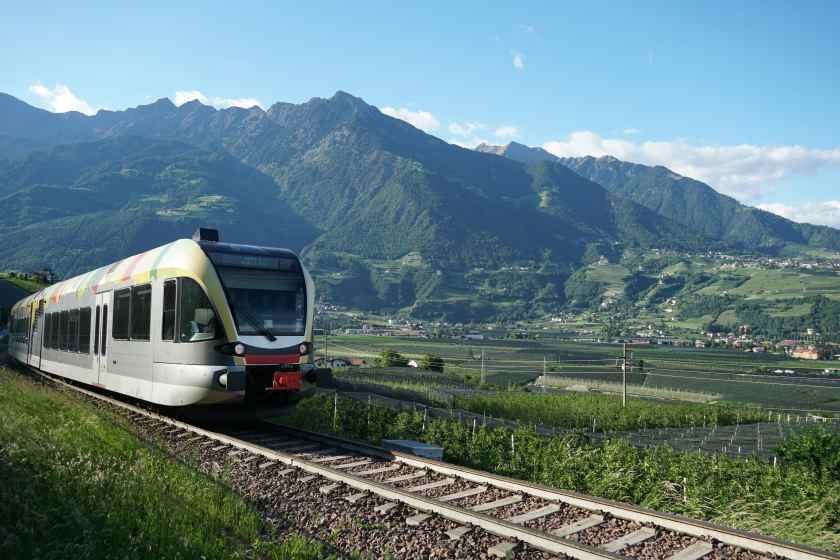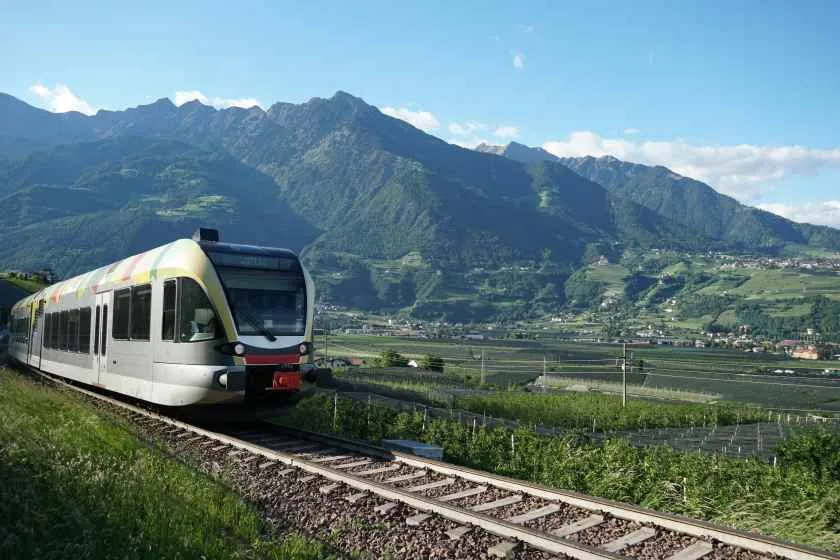Monday, July 21, 2025

Italy has installed its first Earthquake Early Warning System (EEWS) on the high-speed Rome-Naples railway as a part to improve rail safety by stopping trains in the event of a tremor,the system represents a major leap forward in terms of railway safety, employing state-of-the-art technology to keep passengers and infrastructure safe in the event of an earthquake.
The system was developed in cooperation with the Railway Technical Research Institute (JR RTRI), a department of the Japanese railways in Japan, and by the Physics Department of the University of Naples Federico II. With the collaboration of Italian and international Institutions, the system introduces a further step in terms of seismic safety for the railway infrastructures of the European railways.
How the Earthquake Early Warning System Works
The Seismic Early Warning system is based on a mix of cutting edge technologies to sense ground motion, and respond in real-time to safeguard railway traffic. Such a system is based on an accelerometer set-up installed throughout the Rome-Naples high-speed rail line. These stations pick up the first seismic waves called P-waves the first signals of an earthquake.
When these P-waves are measured, the data are instantly transmitted along a high-capacity fibre optic network. This helps the system immediately analyze the seismic hazard, locate affected sites, and take timely response. If it calculates that the shaking is above a certain risk threshold, the system automatically intervenes to slow down or halt the trains running through that area.
The technology works via intelligent software that analyzes the sensor data in real time to calculate the level of risk. It the event that it is required, the railway’s signalling equipment is automatically set in operation to enable safe train operation. Once the seismic event has subsided, RFI personnel can conduct necessary safety verifications, and, through a dedicated control dashboard, grant a secure release of train circulation.
Sensors and Data Transmission for Quick Response
The accelerometer stations, which are extremely sensitive and can measure the first ground accelerations due to the seismic phenomenon, are the heart of the seismic alarm. These sensors are positioned strategically at points of the Rome-Naples line, buried both on the surface and deeper underground for total protection while also shortening the detection time.
The sensors are interfaced to a SDH fibre optic network for rapid transmission of seismic data to central stations. Linking these sensors with the high-capacity fibre optic network to send the data in real time, countervailing measures can be undertaken within a few seconds of capturing seismic data.
Testing and Operational Success
The Earthquake Early Warning System was activated on May 3, 2025. Not long after coming online, a 4.4 magnitude earthquake put it to the test. After this test, trains on the Rome-Naples line were stopped without incident, proving the system works in practice. This test validated the system’s operational capability and was a major step in the implementation of earthquake protection in Italy’s rail transport network.
A Model for the Future: Expanding the Earthquake Warning System
The EEWS application on the Rome-Naples high-speed railway line is one of the first of its kind in a high-speed line in Italy. RFI’s innovation plan foresees additional installations for both the high-speed rail lines as well as for conventional lines that are currently equipped with the European Rail Traffic Management System (ERTMS). The upgrades are likely to make Italy’s overall railway network more robust, especially in areas that are exposed to seismic activities.
The synergy between RFI, University of Naples Federico II and JR RTRI is the first example of international cooperation on railway safety and seismic risk, respectively. The successful integration of the EEWS on the Rome-Naples line can now become a replicable model for other countries with similar seismic hazards, demonstrating an innovative and effective way to protect people and critical infrastructure.
Further Developments and Future Integration
Looking ahead, its Earthquake Early Warning System on the Rome-Naples railway is an example of bringing state-of-the-art technology to bear on essential infrastructure. Using the most sophisticated sensors, AI and real-time data, the system is designed to minimise the effects of natural disasters on transport infrastructure. Safeguarding passengers on Italy’s railway network With sturdy and reactive design, the EEWS provides extra security for passengers across the Italy railway network.
Rome-Naples, the first step of a wider project to protect the safety of High Speed Railway and conventional railway RFI continuously works to enhance safety and robustness of national rail system and Rome-Naples section is the first planned treatment of throughout several Italian conventional and high speed railway lines.
Beyond its basic function, to increase seismic security, the system exemplifies how solutions to protect our critical infrastructure require international cooperation. With its successful implementation, the project opens the door to further developments in seismic protection of railway networks across the globe.
Conclusion
The Earthquake Early Warning System on the Rome-Naples railway line is an important development for the safety and reliability of the Italian railway network. With the aid of advanced sensor technologies, artificial intelligence, and a constant stream of data analytics, Italy has developed the world’s first seismically sensitive safety system for their high-speed rail lines. The successfully development and demonstration of the system represents a benchmark example for other research and technological activities also outside Italy towards safer and reliable railway infrastructure within seismic environments.
(Source: Rete Ferroviaria Italiana (FS Group), Railway Technical Research Institute (JR RTRI))







